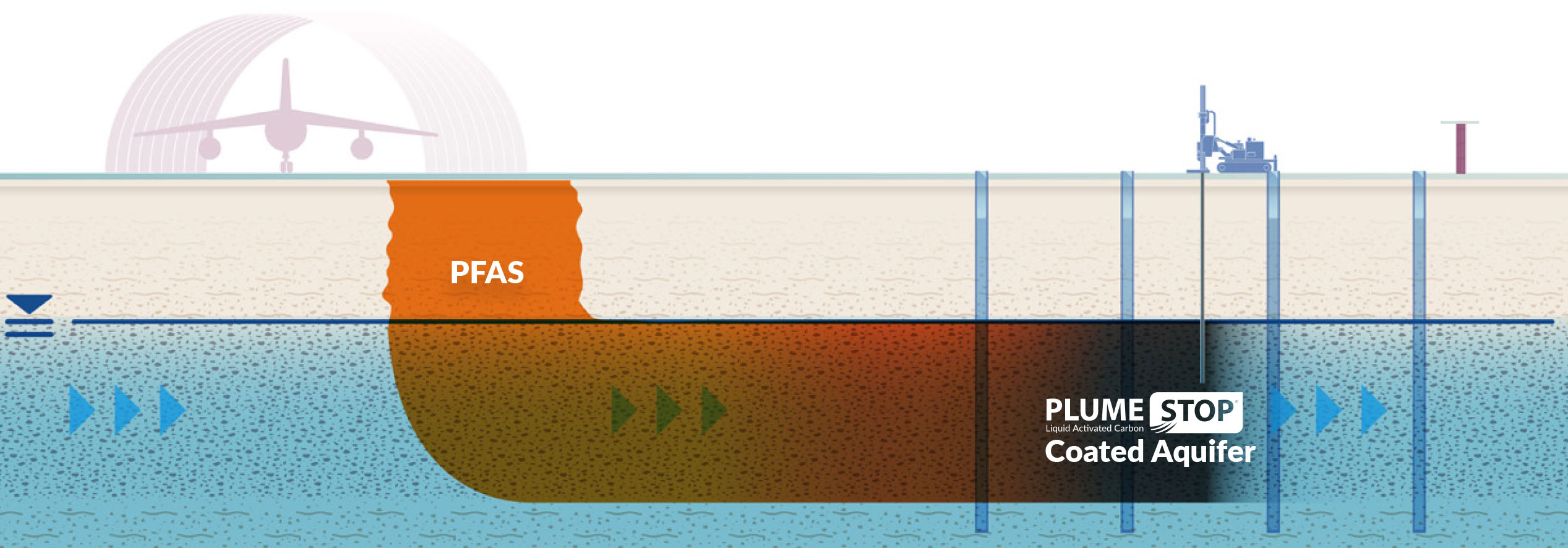PFAS Waste Management for Safer Disposal and Environmental Protection
Wiki Article
Your Overview to PFAS Therapy Technologies and Benefits
The prevalence of PFAS contamination in water resources necessitates a comprehensive understanding of available treatment modern technologies. Each innovation not only targets particular PFAS compounds yet likewise plays a vital duty in improving overall water top quality and securing ecological integrity.Understanding PFAS Contamination
Comprehending PFAS contamination is vital for resolving its pervasive effect on ecological and human health (m270 pfas treatment). Per- and polyfluoroalkyl materials (PFAS) are a team of synthetic chemicals widely made use of in numerous commercial and consumer products because of their water- and grease-resistant residential or commercial properties. Frequently located in firefighting foams, non-stick pots and pans, and water-repellent textiles, PFAS have actually gone into the atmosphere with production procedures, wastewater discharges, and leaching from land fillsOnce released, these substances continue the environment, bring about prevalent contamination of soil and water sources. Their special chemical framework, identified by solid carbon-fluorine bonds, makes them immune to destruction, causing a sensation referred to as "forever chemicals." PFAS can accumulate in the human body and the food chain, potentially triggering negative health effects, including immune system interruption, developing issues, and an enhanced risk of specific cancers cells.
Regulatory agencies and wellness organizations are increasingly identifying the value of PFAS contamination, triggering efforts to check, examine, and reduce its impacts. Understanding the pathways of PFAS contamination is necessary for informing public law and developing efficient methods to protect both environmental and human health.
Overview of Treatment Technologies
Numerous therapy innovations have actually been developed to deal with the challenges posed by PFAS contamination in water and soil. These technologies can be broadly identified right into several classifications, each with its unique systems and effectiveness in removing PFAS compounds.One prominent strategy is ion exchange, which makes use of resin products to capture and remove PFAS from contaminated water. This approach is specifically reliable for short-chain PFAS and can achieve substantial reductions in concentration degrees. Another modern technology, progressed oxidation processes (AOPs), uses strong oxidants and ultraviolet light to break down PFAS right into less hazardous compounds. AOPs are ideal for dealing with a vast array of PFAS substances however might require cautious optimization to take full advantage of efficiency.

Activated Carbon Filtration
Activated carbon purification is a widely utilized method for the elimination of PFAS from infected water, recognized for its capability to adsorb a broad variety of organic substances. This technology employs triggered carbon, a highly permeable material with a comprehensive surface, which promotes the binding of PFAS particles with physical adsorption. The effectiveness of turned on carbon in eliminating PFAS is influenced by a number of factors, including the kind of carbon made use of, the call time, and the focus of PFAS in the water.Among the advantages of turned on carbon purification is its flexibility; it can be carried out in various arrangements, such as granular triggered carbon (GAC) systems or powdered triggered carbon (SPECIAL-INTEREST GROUP) systems. GAC systems are commonly employed in larger-scale applications, while special-interest group can be utilized in smaller or momentary configurations. Additionally, the innovation is reasonably very easy to operate and preserve, making it available for many water treatment original site facilities.

Ion Exchange Systems
Ion exchange systems represent another efficient technique for the removal of PFAS from contaminated water, enhancing methods like activated carbon filtering. These systems operate on the concept of exchanging ions in the water with ions hung on a resin material. Ion exchange resins can be particularly formulated to target the adversely billed PFAS substances, successfully recording them and allowing cleaner water to pass through.Among the main benefits of ion exchange systems is their ability to remove a large range of PFAS, consisting of both long-chain and short-chain variants. This convenience makes them appropriate for numerous applications, ranging from local water therapy to industrial procedures. In addition, ion exchange systems can usually accomplish reduced discovery limits for PFAS contrasted to a few other treatment methods, thus boosting water top quality.
Nevertheless, it is important to monitor and manage the regrowth of ion exchange media, as the performance can decline in time due to saturation. Proper maintenance and replacement of the material are essential for sustaining the system's performance. In general, ion exchange systems offer a dependable and efficient option for PFAS removal, contributing significantly to secure drinking water criteria and environmental management.
Advanced Oxidation Processes
Advanced Oxidation Processes (AOPs) utilize powerful oxidants to efficiently weaken PFAS compounds in contaminated water. These ingenious therapy techniques generate extremely reactive species, such as hydroxyl radicals, that can damage down complicated PFAS particles into much less harmful by-products. m270 pfas treatment. AOPs usually use mixes of ultraviolet (UV) light, ozone, hydrogen peroxide, or Fenton's reagent, boosting the oxidation possibility and enhancing deterioration performanceThe main benefit of AOPs hinges on their ability to target a broad variety of PFAS substances, consisting of both long-chain and short-chain versions. This flexibility is important, as PFAS contamination usually involves blends of different substances with varying chemical frameworks. Furthermore, AOPs can be integrated into existing water therapy systems, making them a functional solution for lots of towns and industries.
Nevertheless, the application of AOPs can be resource-intensive, requiring cautious consideration of operational expenses and power consumption. Additionally, while AOPs work in damaging down PFAS, they may not completely get rid of all results, demanding more therapy actions - m270 pfas treatment. On the whole, AOPs represent an encouraging opportunity for resolving PFAS contamination, adding to cleaner water sources and improved public Home Page health security

Verdict
By choosing his explanation the appropriate modern technology, areas can boost water quality, safeguard public health and wellness, and mitigate the environmental dangers linked with PFAS direct exposure. Proceeded research study and execution of these methods are crucial for reliable administration of PFAS contamination in affected locations.Report this wiki page